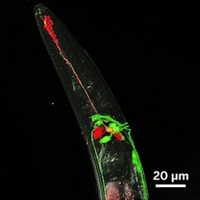Advertisement
Grab your lab coat. Let's get started
Welcome!
Welcome!
Create an account below to get 6 C&EN articles per month, receive newsletters and more - all free.
It seems this is your first time logging in online. Please enter the following information to continue.
As an ACS member you automatically get access to this site. All we need is few more details to create your reading experience.
Not you? Sign in with a different account.
Not you? Sign in with a different account.
ERROR 1
ERROR 1
ERROR 2
ERROR 2
ERROR 2
ERROR 2
ERROR 2
Password and Confirm password must match.
If you have an ACS member number, please enter it here so we can link this account to your membership. (optional)
ERROR 2
ACS values your privacy. By submitting your information, you are gaining access to C&EN and subscribing to our weekly newsletter. We use the information you provide to make your reading experience better, and we will never sell your data to third party members.
Biological Chemistry
Limb-Regenerating Protein is Revealed
November 5, 2007
| A version of this story appeared in
Volume 85, Issue 45
Newts are well-known for regrowing lost limbs. A study by researchers in England now reveals the protein that makes this regeneration process possible (Science 2007, 318, 772). Molecular biologist Jeremy P. Brockes of University College London and colleagues identified newt anterior gradient (nAG) protein and showed that it is expressed both by the regenerating nerve within the remaining stump after limb loss and by skin near the wound. The researchers believe that nAG binding to the cell-surface protein Prod 1 promotes growth of cells in the stump. Biologist David L. Stocum, who studies regeneration at Indiana University-Purdue University, Indianapolis, says the findings could "help guide the field of regenerative medicine." The results also could "help explain why mammals have limited regrowth abilities, because the nerve sheath may not produce nAG, or cells cannot respond to it because they lack Prod 1," he notes. "But it is more likely that many other factors are missing as well."





Join the conversation
Contact the reporter
Submit a Letter to the Editor for publication
Engage with us on Twitter